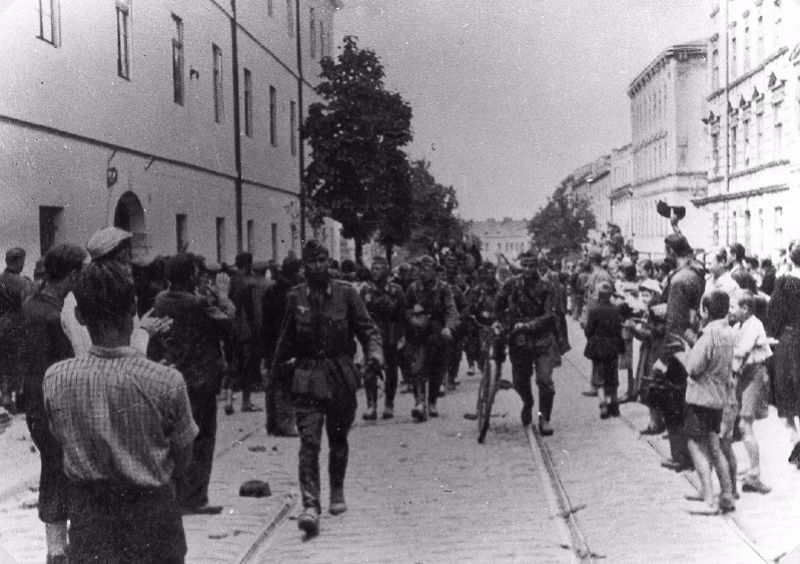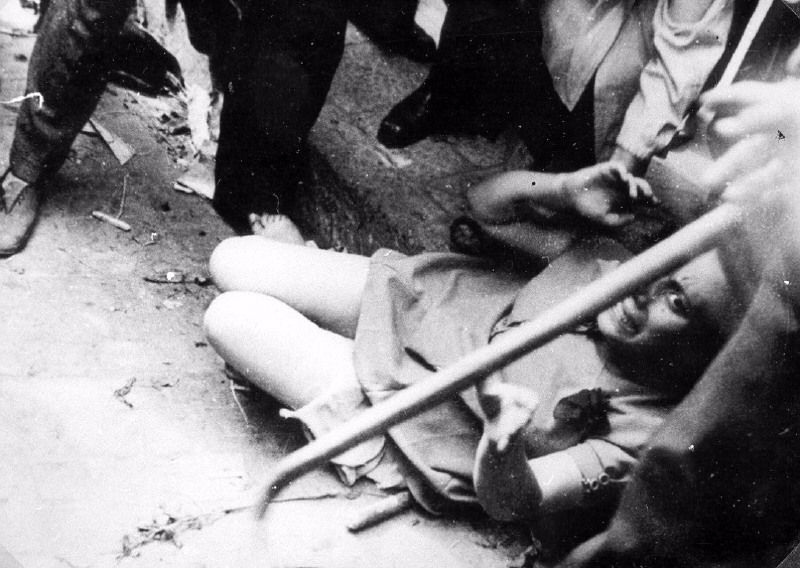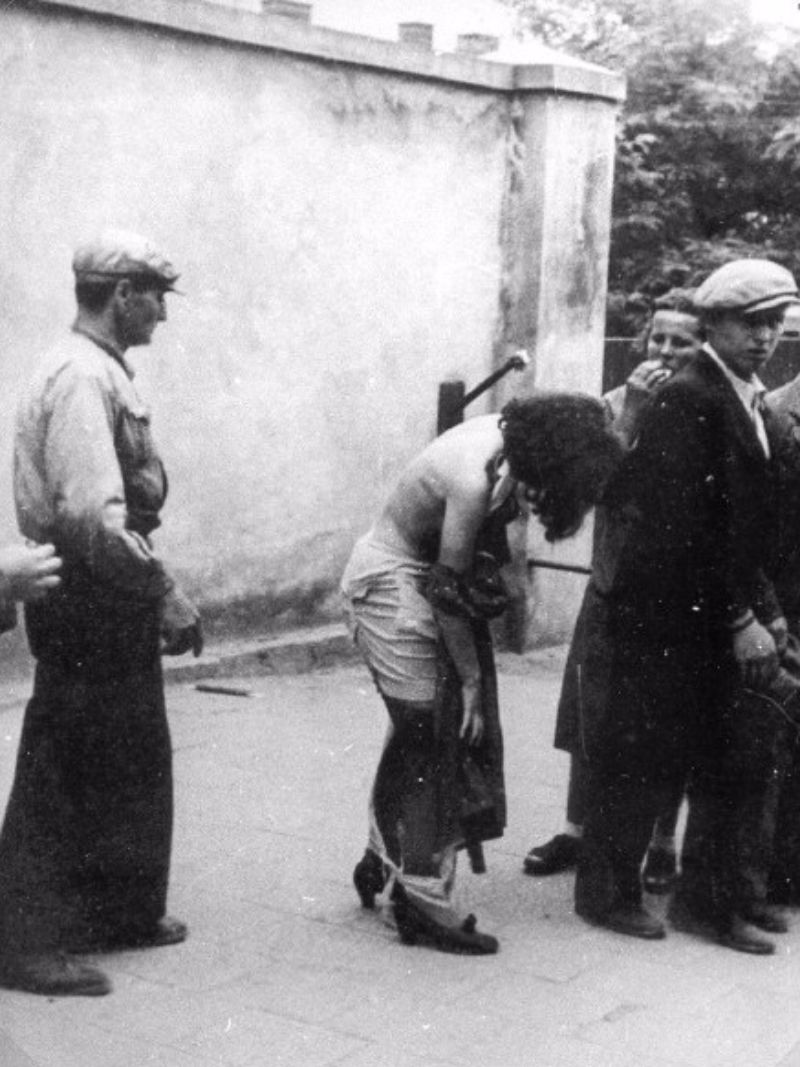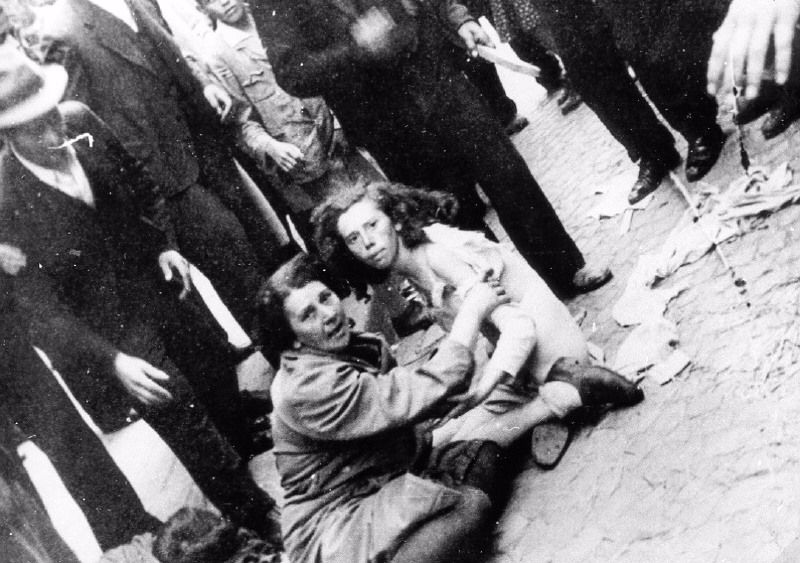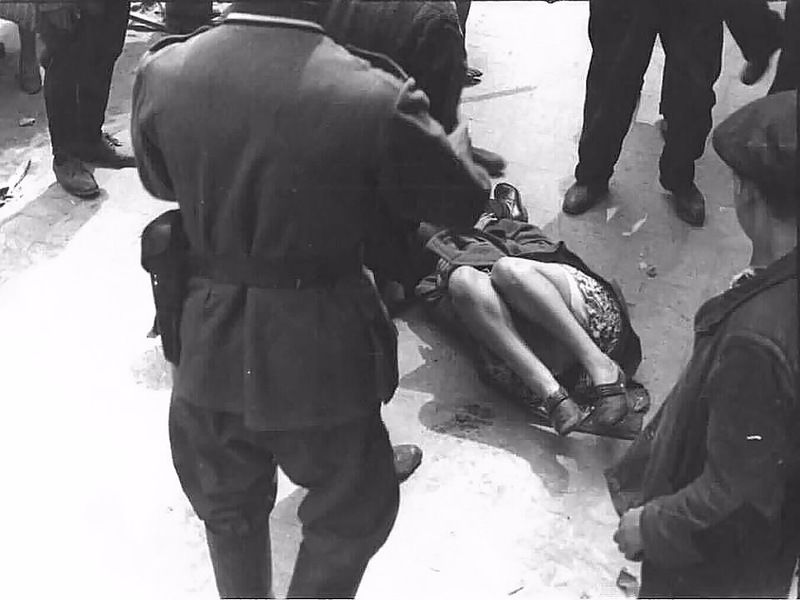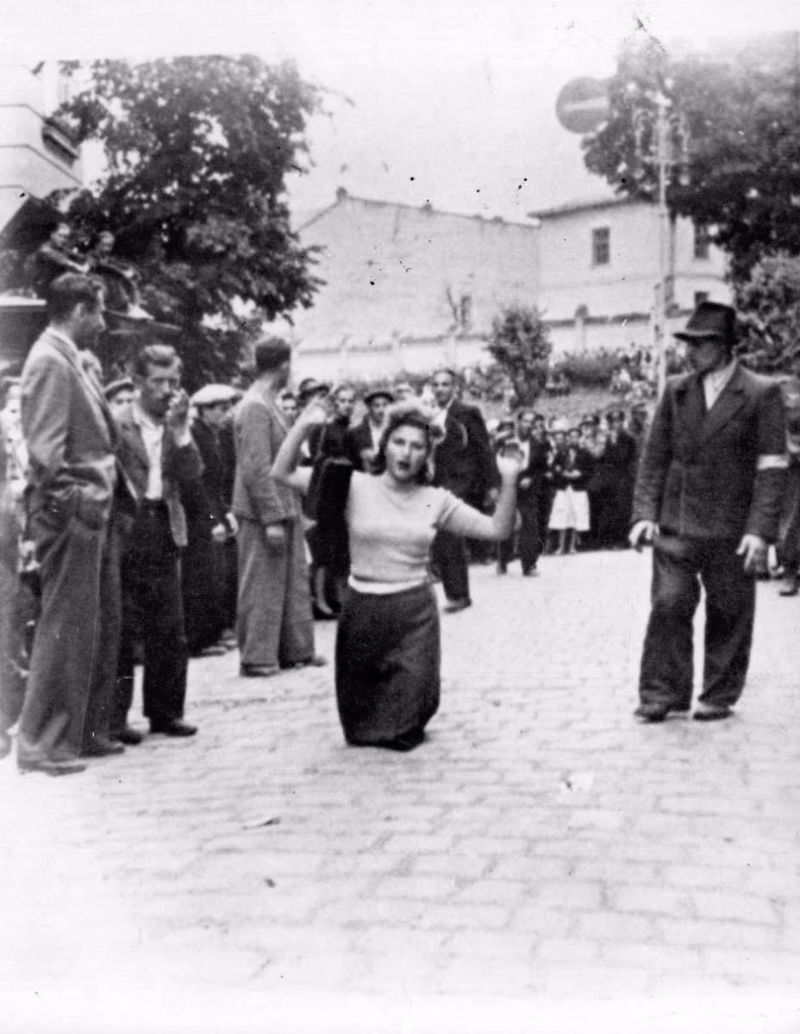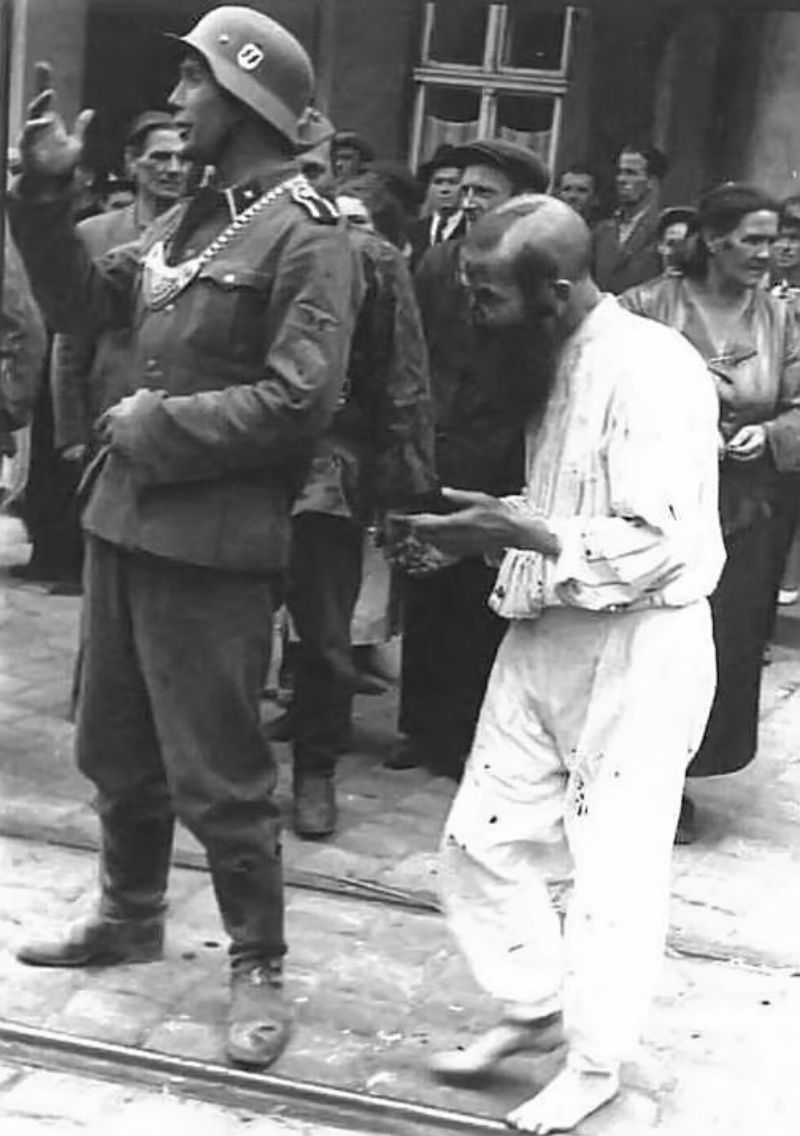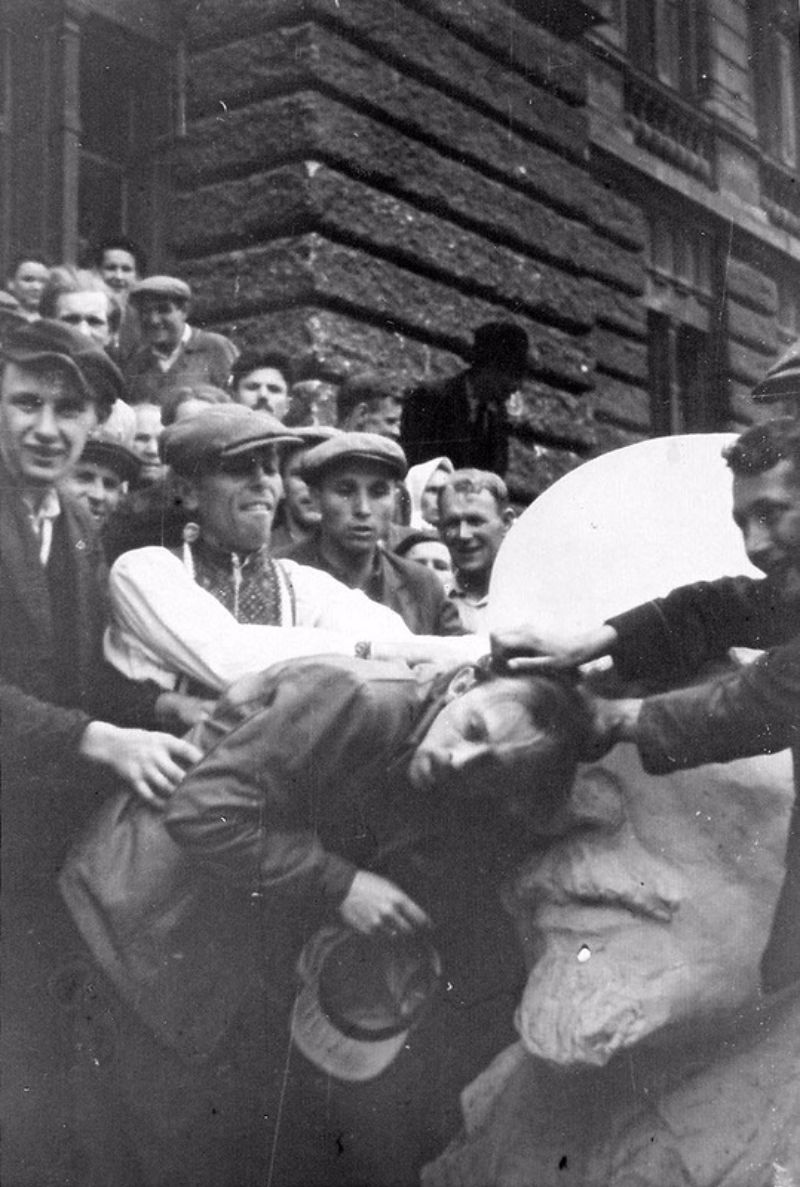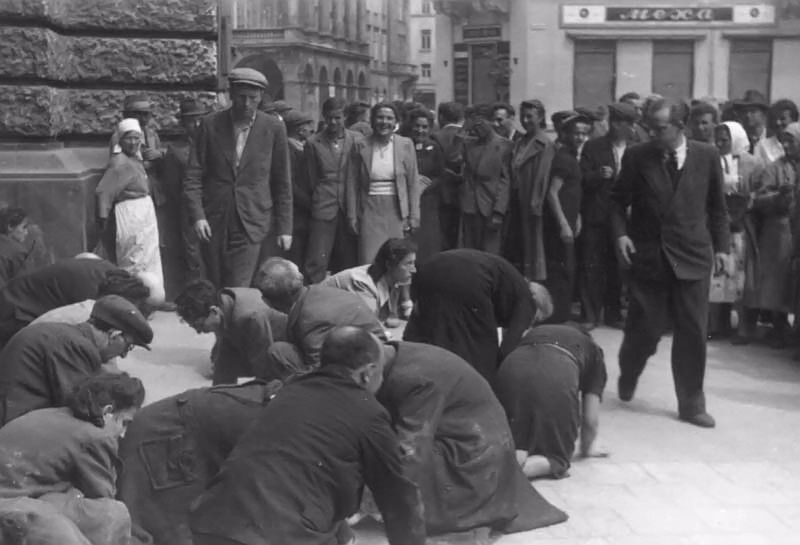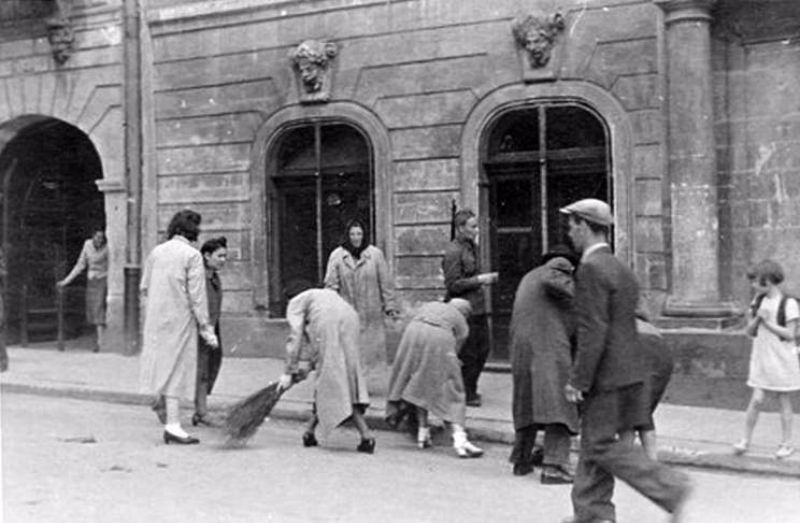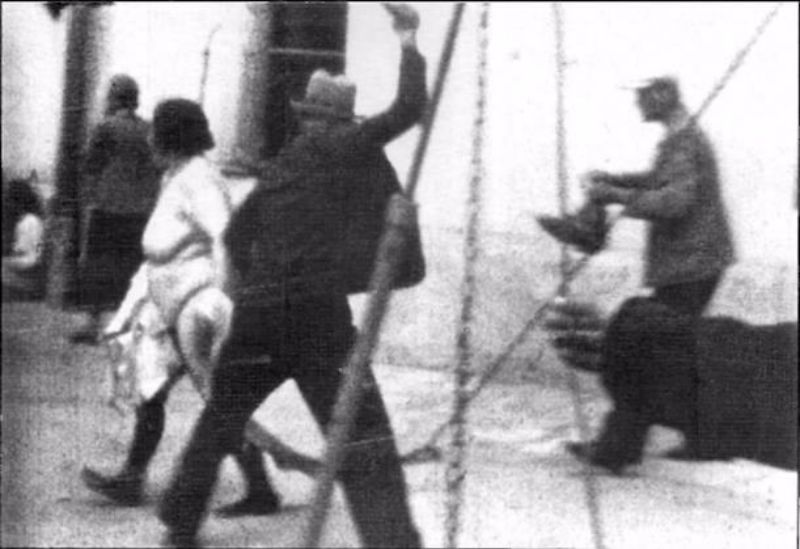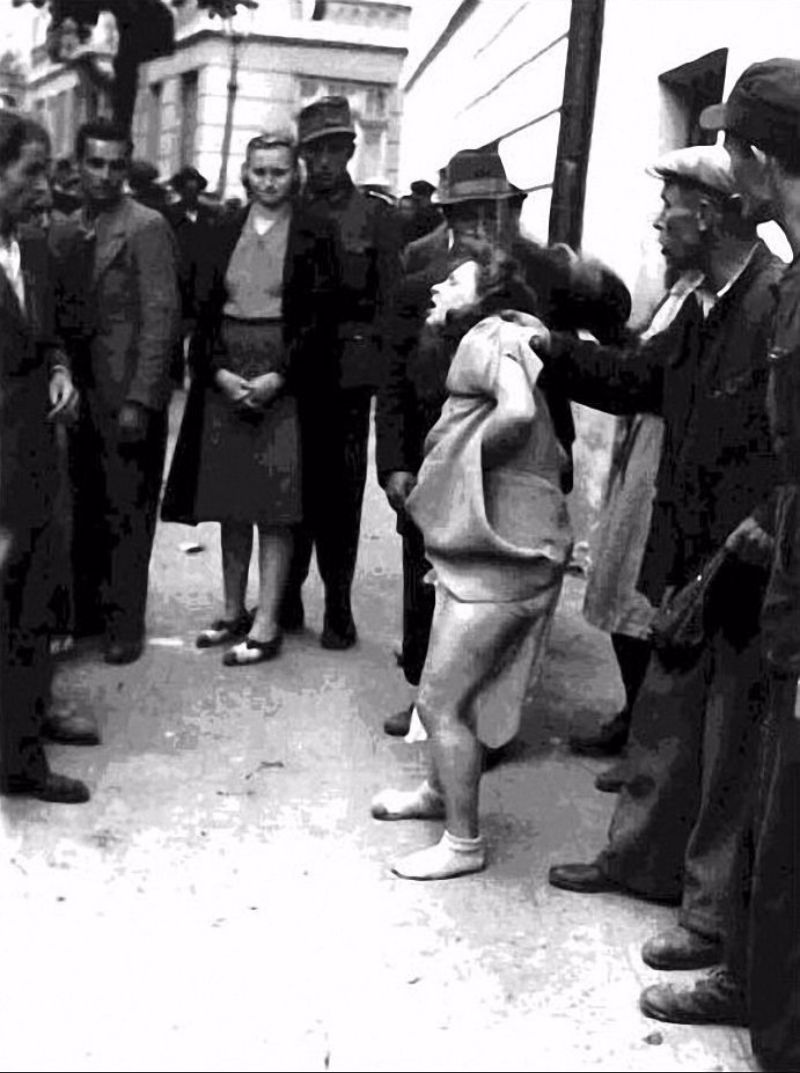The Lviv pogroms were the consecutive massacres of Jews living in the city of Lwów (now Lviv, Ukraine), perpetrated by Ukrainian nationalists (specifically, the OUN), German death squads (Einsatzgruppen), and urban population from 30 June to 2 July, and from 25 to 29 July, during the German invasion of the Soviet Union. Ukrainian nationalists targeted Jews in the first pogrom on the pretext of their purported responsibility for the NKVD prisoner massacre in Lviv, which left behind thousands of corpses in three Lviv prisons. The subsequent massacres were directed by the Germans in the context of the Holocaust in Eastern Europe. At the time of the German attack on the Soviet Union, about 160,000 Jews lived in the city; the number had swelled by tens of thousands due to the arrival of Jewish refugees from German-occupied Poland in late 1939. Immediately after the German army entered Lviv, the prison gates were opened and the scale of the NKVD prisoner massacres carried out by the Soviets were revealed. The report drafted by Judge Möller singled out the Jews as responsible for the Soviet atrocities in accordance with the Nazi theory of Judeo-Bolshevism, even though Polish Jews had nothing to do with the NKVD killings. As observed by British-Polish historian Prof. Norman Davies: “in the [Lviv] personnel of the Soviet security police at the time, the high percentage of Jews was striking”. A full-blown pogrom began on the next day, 1 July. Jews were taken from their apartments, made to clean streets on their hands and knees, or perform rituals that identified them with Communism. Gentile residents assembled in the streets to watch. Jewish women were singled out for humiliation: they were stripped naked, beaten, and abused. On one such occasion, a German military propaganda company filmed the scene. Rapes were also reported. Jews continued to be brought to the three prisons, first to exhume the bodies and then to be killed.
Sub-units of Einsatzgruppe C arrived on 2 July, at which point violence escalated further. More Jews were brought to the prisons where they were shot and buried in freshly dug pits. It was also at this point that the Ukrainian militia was subordinated to the SS. In addition to participation in the pogrom, Einsatzgruppe C conducted a series of mass-murder operations which continued for the next few days. Unlike the “prison actions”, these shootings were marked by the absence of crowd participation.
A second pogrom took place in the last days of July 1941 and was called “Petliura Days” (Aktion Petliura) after the assassinated Ukrainian leader Symon Petliura. The killings were organized with German encouragement, while Ukrainian militants from outside the city joined the fray with farm tools. In the morning of 25 July, militants began to assemble at the city’s police stations. Accompanied by the Ukrainian auxiliary police, they assaulted Jews on the streets with clubs, axes, and knives. In the afternoon, arrests and looting began. Consulting prepared lists, policemen arrested Jews in their homes, while civilians participated in acts of violence against Jews in the streets. Many were killed out of sight. According to Yad Vashem, about 2,000 people were murdered in approximately three days.
The estimates for the total number of victims vary. A subsequent account by the Lviv Judenrat estimated that 2,000 Jews disappeared or were killed in the first days of July. A German security report of 16 July stated that 7,000 Jews were “captured and shot”. The former is possibly an undercounting, while the German numbers are likely exaggerated, in order to impress higher command. According to the Encyclopedia of Camps and Ghettos, 1933–1945, the first pogrom resulted in 2,000 to 5,000 Jewish victims. An additional 2,500 to 3,000 Jews were shot in the Einsatzgruppen killings that immediately followed. During the so-called “Petliura Days” massacre of late July, more than 1,000 Jews were killed. According to the historian Peter Longerich, the first pogrom cost at least 4,000 lives. It was followed by an additional 2,500 to 3,000 arrests and executions in subsequent Einsatzgruppen killings, with “Petliura Days” resulting in more than 2,000 victims. For decades after the war, the pogroms in Western Ukraine received limited academic attention and were mostly discussed in the context of the series of photographs taken during the Lviv pogrom. The photographs have been variously described by historians as “infamous”, “horrific”, and “almost iconic”. Some of the footage and photographs of the first pogrom were misinterpreted as showing NKVD’s victims. In fact, these images showed Jewish victims killed after they had exhumed the bodies. They can be identified by white shirts and suspenders, which would have been prohibited in prisons, along with the haphazard body positions. In contrast, NKVD’s victims were laid out neatly in rows and had dull-grey clothes. The historian Dieter Pohl estimates that 4,000 of Lviv’s Jews were killed in the pogroms between 1 and 25 July. According to the historian Richard Breitman, 5,000 Jews died as a result of the pogroms. In addition, some 3,000 mostly Jews were executed in the municipal stadium by the Germans.
(Photo credit: Wehrmacht Archives / Bundesarchiv / Wikimedia Commons / Britannica). Notify me of new posts by email.
Δ Subscribe


